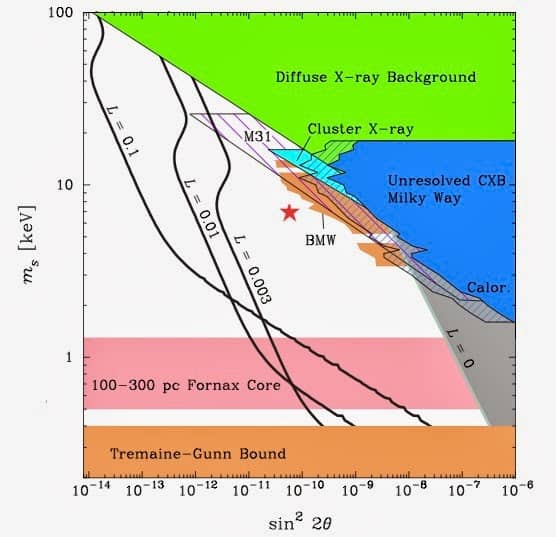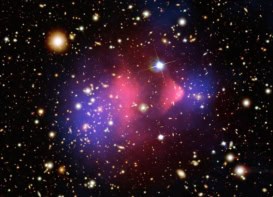
By Tushna Commissariat
It is always interesting to us at Physics World when a particular topic suddenly attracts the attentions of the physics community, especially when it’s a rather hotly debated subject. The past couple of days, for example, have seen a lot of talk about “sterile neutrinos”, based on two papers – published in quick succession on the arXiv preprint server – that suggest the tentative detection of these hypothetical paricles.
Both papers are based on an unidentified emission line seen in the X-ray spectrum of some galaxy clusters obtained by the European Space Agency’s XMM-Newton observatory. Intriguingly, sterile neutrinos are also considered to be possible dark-matter candidates, meaning that – if discovered – they would be the first fundamental particles to lie beyond the bounds of the Standard Model of particle physics.
For those of you who haven’t heard about the sterile neutrino before, it’s a proposed and much-debated fourth type of neutrino that would have a mass but would not interact with the weak force at all, in contrast to the three types of neutrinos we do know exist – the electron, muon and tau neutrinos. Indeed, sterile neutrinos (if they exist) are likely to be even trickier to detect than the others as they would interact only with these “active” neutrinos.
In the new research, Bulbul et al. and Boyarsky et al. both identified an extremely weak, monochromatic, 3.5 keV line in the X-ray spectrum that could be interpreted as a signal emerging from a decaying 7 keV sterile neutrino. The graph above, taken from Bulbul’s paper, shows all the recent constraints placed on sterile neutrino production models — the measurement obtained by Bulbul and colleagues is marked with the star in red and is consistent with previous upper limits and is in a region of space that has not yet been ruled out. The researchers involved in both papers clearly state that the observation itself is currently very uncertain. That’s because the signal is weak and is located within several well-known faint lines – plus there are “significant modelling uncertainties”.
All of which means that the detection might be just one more false alarm. In fact, experiments have long been trying to detect sterile neutrinos and, so far, placing limits on their mass or lifetime is the best that has been achieved.
Adam Falkowski, who writes the Resonaances blog, has discussed the papers in some depth and what he has to say is worth reading. As he explains, if the signal itself is found to be accurate and indicative of “new physics”, then one possible explanation may point towards the sterile neutrino. While Falkowski is cautiously optimistic about this finding, others such as Matt Strassler, who writes the Of Particular Significance blog, are more sceptical. In fact, Strassler suggests that we don’t lose any sleep over it until the signal is confirmed.
On the other hand, I’ve been surprised that no neutrino researchers have been commenting the papers, so I dropped Maury Goodman, the leader of the Argonne high-energy-physics neutrino group, an e-mail asking for his view. While Goodman has not had a chance to read though the new research, he’s clear where he stands on the subject of sterile neutrinos: he doesn’t believe they exist.
Goodman explains that measurements made on neutrino mass and mixing angles over the last 15 years have been mostly consistent, with the exception of a few measurements that some researchers interpret as evidence of more neutrinos. “It is my understanding that it is impossible to fit any of those anomalies together in a consistent way, and I hear a lot of statistical arguments that are, in my opinion, misguided,” he insists. Goodman goes on to say that while “a sizable minority of neutrino physicists are considering sterile-neutrino searches, I think a majority of us discount the idea”.
The bottom line is that the new research has got many physicists talking – both Sean Carroll and Jim Al-Khalili tweeted about it yesterday and there is lots more chatter about the particle on Twitter. (Only yesterday, we published another news story that revolved around the sterile neutrino, but I will leave you to take a look at that for yourselves, as it is based on an unrelated observation.)
Whether anything truly groundbreaking will emerge from this anomalous signal or if it too will be banished to the vaults of near-miss signals remains to be seen.



